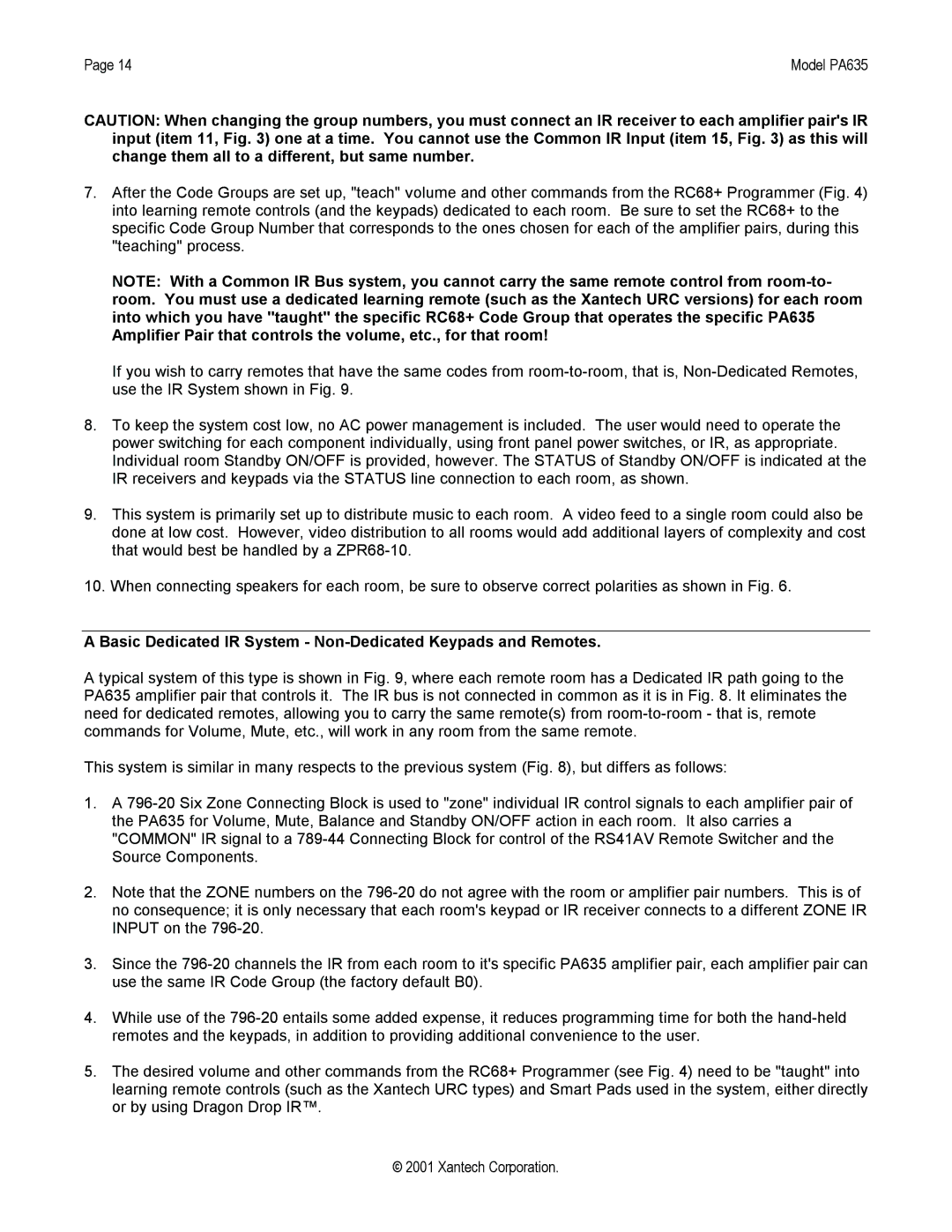PA635 specifications
The Xantech PA635 is a sophisticated audio amplifier designed to elevate the home entertainment experience. With its blend of power, versatility, and advanced technology, the PA635 stands out in the realm of multi-room audio solutions. This amplifier is a reliable choice for both professional installations and private home setups, catering to a diverse range of audio needs.One of the main features of the Xantech PA635 is its impressive power output. This amplifier delivers a robust 35 watts per channel, allowing it to drive multiple speaker types with ease. It is capable of accommodating 6 channels, which can be particularly advantageous for larger home theater systems or multi-room audio setups. The configuration options offer flexibility, enabling users to tailor their audio experience to their preferences.
The PA635 employs advanced technology to enhance sound quality and ensure consistent performance. It features a high-efficiency design that minimizes heat generation, allowing for prolonged use without overheating. Additionally, the amplifier is equipped with an easy-to-use front panel for quick adjustments and LED indicators that provide visual feedback about the device's status.
Connectivity options are another highlight of the Xantech PA635. The amplifier supports both traditional and modern audio input methods, including RCA and line-level inputs. Moreover, it includes banana plug outputs for seamless speaker connections, ensuring a straightforward installation process. Its compatibility with various audio sources makes it versatile for integration into existing systems.
Another noteworthy characteristic of the PA635 is its compact form factor. The sleek design allows it to fit easily into tight spaces, making it ideal for small rooms or equipment racks. This space-saving feature does not compromise on performance, as the amplifier is built to deliver superior sound output in any environment.
Moreover, the Xantech PA635 boasts robust protection circuits to safeguard against overload and short circuits. This is particularly important in professional installations where reliability and safety are paramount. The amplifier's durability makes it a long-term investment for users seeking a dependable audio solution.
In summary, the Xantech PA635 stands out as a powerful, flexible audio amplifier with a range of features and technologies aimed at enhancing sound quality and user experience. Its combination of performance, connectivity, and compact design makes it an excellent choice for both home and professional audio systems. Whether for casual listening or immersive home theater experiences, the PA635 is designed to meet diverse audio needs with ease.
